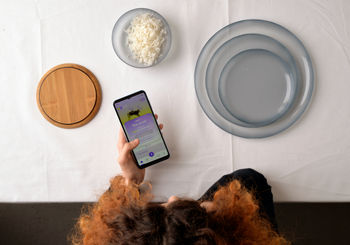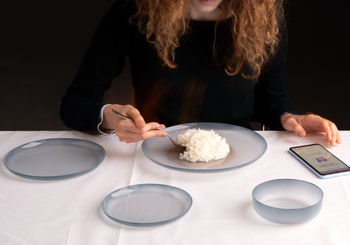HealEat: ARFID tridimensional intervention
Alessia Colucci
In 2013, the recognition of Avoidant/Restrictive Food Intake Disorder (ARFID) extended into adulthood, highlighting a gap in tailored therapies for adolescents and young adults. Current therapies, primarily designed for eating disorders in general, face challenges in addressing the unique characteristics of ARFID, particularly during the transitional to independence in adolescence. This project addresses these gaps by introducing a treatment tool for ARFID outpatients. The system integrates Cognitive Behavioural Therapy (CBT) principles, gamification, eating habit detection, machine learning and personalised food suggestions.
The system includes a set of plates, a monitoring tool and an application. Glass plates manipulate perception through the Ebbinghaus-Titchener size illusion, altering the apparent food quantity in contrast with plate size. The plates also include a container for transporting familiar food where it is not present. The container’s bamboo lid doubles as a monitoring tool, equipped with load cells and a camera for real-time tracking of eating habits, frequency, food recognition, and weight, offering a personalized and objective progress assessment.
The app, guided by gamification elements and informed by monitoring tool data (the lid), leads users through CBT steps, tailoring the process and suggestions to individual needs. As users progress, the app encourages the expansion of familiar foods through food chaining techniques, providing reminders and support to increase meal quantity and frequency based on the user’s level in the app.
This combination empowers individuals in real time, promotes autonomy and positive eating habits, and provides a personalised, non-clinical intervention.








